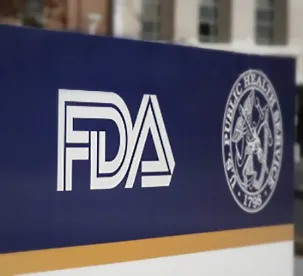On December 22, 2021, the Food and Drug Administration (FDA) published draft guidance documents for manufacturers of devices that were issued Emergency Use Authorizations (EUAs) or were subject to relaxed enforcement policies during the COVID-19 pandemic. Acknowledging that the COVID-19 emergency will not last forever, the FDA’s recent draft guidances propose a 180-day transition path back to “normal operations,” i.e., compliance with the Federal Food, Drug, and Cosmetic Act (FDCA) and regulatory requirements. The transition periods, which would begin (in most cases) 180 days after the end of the public health emergency (PHE), would allow manufacturers, healthcare facilities, and other stakeholders to avoid supply disruptions and product shortages. Following the transition period, manufacturers who want to continue selling covered devices would be expected to comply with all the usual regulatory requirements. Manufacturers who do not wish to continue distribution post-PHE could keep business as usual through the end of the 180-day transition period. Comments on the draft guidance are due on March 23, 2022. The guidance for EUA devices can be found here, and for devices marketed under COVID-19 enforcement policies, here.
Guidance Overview
Following the declaration of COVID-19 as a PHE, the FDA authorized the emergency use of certain devices, like COVID-19 tests, personal protective equipment, and ventilators, to meet the incredible demand the pandemic created. The FDA also relaxed some of its enforcement policies for the same reason, and in recognition of flexibility needed for a successful emergency response to the pandemic. The guidance documents issued in December are intended to provide a plan to move away from these emergency policies back to standard policies and procedures.
When do I need to convert my EUA to a premarket application (e.g., 510(k))?
Before the 180-day transition period ends, or before the EUA terminates. For devices distributed under an EUA, section 564 of the FDCA requires the Secretary of HHS to provide advanced notice of the termination, and to consult with the manufacturer of the product with respect to the appropriate disposition of that product. To meet this requirement, the guidance contemplates the FDA providing manufacturers notice of EUA termination in the Federal Register 180 days prior to the set termination date. Companies would need to submit a marketing application (e.g., a 510(k) application or de novo request) and other required documents to come into compliance before the EUA terminates.
I distribute products under an EUA, what do I do now?
Manufacturers should continue to abide by the compliance requirements of their product’s EUA through the 180-day notice period. Up until the EUA termination date, there is no impact on the day-to-day distribution of EUA covered products.
For manufacturers who plan on distributing their products after their EUA termination dates, manufacturers should submit their premarket submissions (i.e., 510(k) or de novo request) as soon as practical. The FDA suggests submitting with ample time prior to the termination date to alleviate a potential influx of submissions. As with the devices covered by an emergency enforcement policy, with the 510(k) submission or de novo request, manufacturers should include a transition implementation plan in the submission.
I distribute products under a relaxed enforcement policy. How long can I continue to do so?
Unlike EUAs, temporary COVID-19 enforcement policies will terminate the day the declared PHE ends. To provide distributors with some notice and opportunity to achieve compliance, the guidance provides a similar 180-day transition period, with the emergency policies to be withdrawn 180 days after the end of the PHE. Up until the end of the 180-day transition period, there is no impact on the day-to-day distribution of products under the relaxed policies.
I distribute products subject to a PHE enforcement policy and want to continue distributing them after the pandemic. What should I do now?
The current guidance has been submitted for public comment, and is non-binding at the moment. However, manufacturers who want to continue selling their devices post-PHE should begin putting together the materials to submit a premarket application to the FDA (if required), and begin implementing compliance programs tailored to the regulatory requirements that will apply in non-emergency times.
The 180-day transition period has three phases: Phase 1, which begins as soon as the PHE declaration ends, allows manufacturers to continue distributing as is. The guidance suggests following the adverse event reporting requirements of 21 CFR Part 803 in preparation for later phases. Phase 2 begins 90 days after the implementation date (i.e., the end of the PHE). During this time, manufacturers who plan to continue distribution should also follow 21 CFR Part 807, which includes registration and listing requirements. Phase 3 begins 180 days after implementation, when the FDA will withdraw the PHE emergency policies, requiring manufacturers to comply with all statutory and regulatory requirements for their devices, including current good manufacturing practice (cGMP) and labeling requirements.
During Phases 1 and 2, manufacturers who plan on continuing distribution should prepare and submit 510(k) submissions, as the FDA states that it expects the submissions prior to Phase 3, and encourages submission as early as possible. With this submission, the guidance suggests a transition implementation plan, covered in a separate section below.
What is the “transition implementation plan” that should be submitted with my premarket application?
FDA expects companies to include in their submission a “transition implementation plan” to address how the manufacturer will respond to a positive or negative decision by the FDA on its marketing submission. The transition implementation plan should focus on the devices already distributed and include information such as the estimated number of devices in the market, and a rationale and considerations for leaving an EUA device, or device distributed under an enforcement policy, should the marketing submission decision be negative. Details on the transition plan can be found in the guidances here (EUA devices) and here (enforcement policy devices).
Will my product be pulled from the market on the termination date of my EUA or Phase 3 of my PHE enforcement policy?
It depends. Where a premarket application (e.g., 510(k) submission or de novo request) has been submitted and accepted by the FDA prior to the EUA termination date or the start of Phase 3, and where the FDA has not taken final action (e.g., denial), the device may remain on the market (absent exigent circumstances).
Given the short supply of COVID-19 diagnostic tests, the FDA also will permit the continued distribution of COVID-19 diagnostic tests marketed under an EUA for up to two years after the termination date, or until the product’s expiration date, whichever is less.
For manufacturers who do not intend on continuing distribution, the FDA will not request removal of devices distributed under EUAs or PHE enforcement policies for the following device categories:
-
single use, non-life-supporting or sustaining devices distributed before the termination date and are consumed by the end user (g., face masks);
-
reusable, non-life-supporting or sustaining devices distributed before the termination date so long as they are restored to the FDA-cleared version, or have publicly available labeling that features the regulatory status (g., remote patient monitoring devices, infusion pumps); and
-
reusable, life-supporting or sustaining devices that were distributed prior to the termination date, so long as they are restored to the FDA cleared version and have publicly available and a physical copy of the regulatory status (g., ventilators).
Do I need to submit a “notification of intent” to the FDA?
Manufacturers of specific life-supporting or life-sustaining devices that have been issued an EUA are asked to submit a “notification of intent” to the FDA regarding whether they intend on continuing distribution following their EUA termination date. The purpose of the notification is to allow the FDA to plan resources for the bolus of submissions. The list of devices for which FDA is requesting notification can be found here and includes devices such as ventilators and oxygen generators.
Elizabeth Hummel also contributed to ths article.




 />i
/>i

